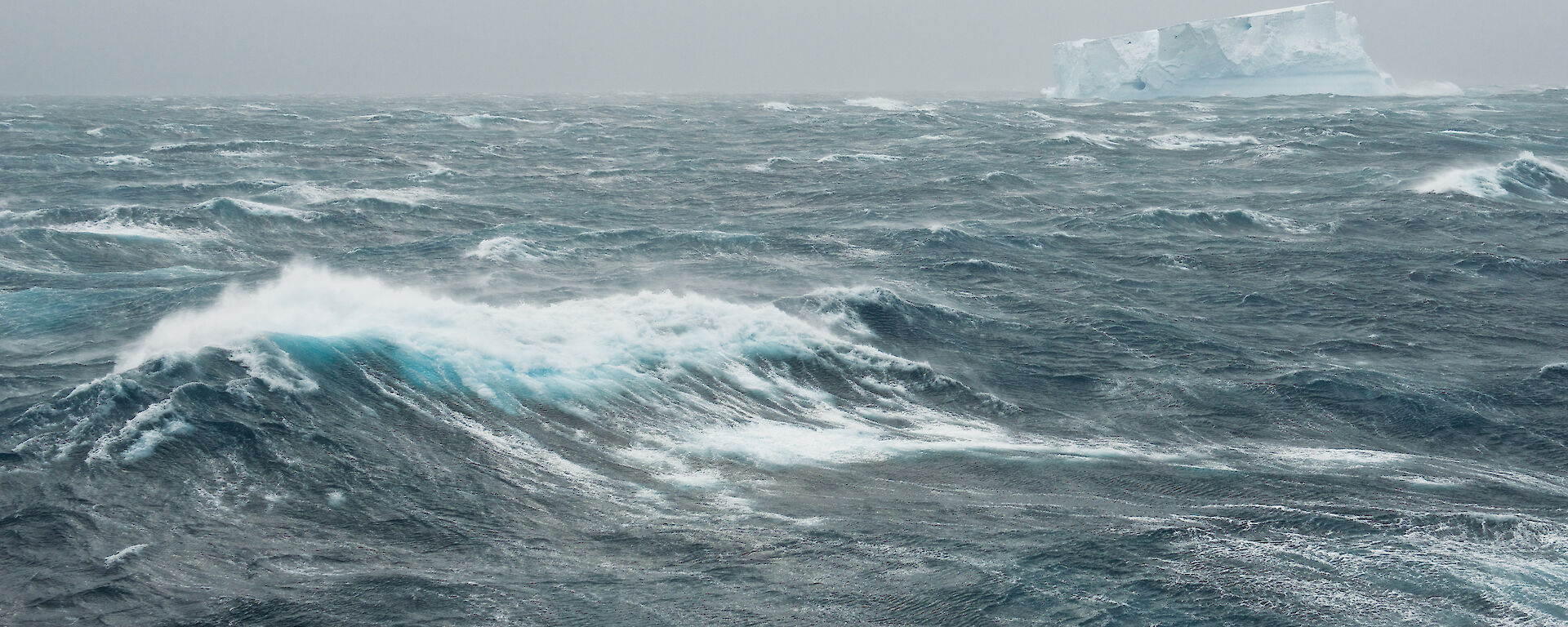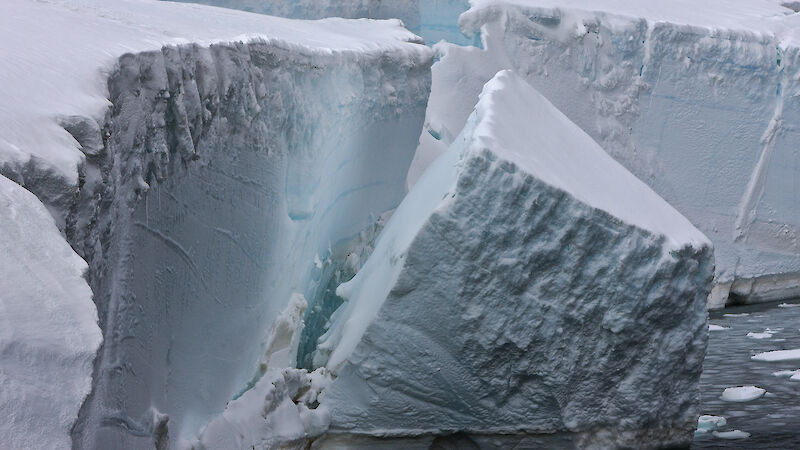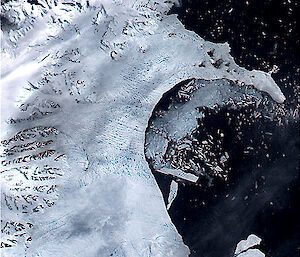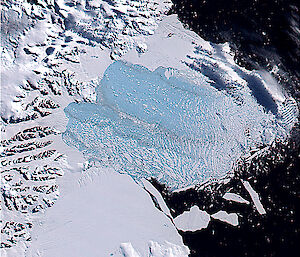Lead author, Dr Rob Massom, of the Australian Antarctic Division and the Antarctic Climate and Ecosystems Cooperative Research Centre, said that reduced sea ice coverage off the Antarctic Peninsula since the late-1980s exposed ice shelves to storm-generated ocean swells, causing their vulnerable outer margins to flex and eventually break.
“Sea ice acts as a buffer to protect ice shelves, by damping destructive ocean swells before they reach the ice shelf edge,” Dr Massom said.
“But where there is regional loss of sea ice, storm-generated ocean swells can readily reach the exposed ice shelf and cause its outer few kilometres to flex.
“The cumulative effect of this flexing is to enlarge pre-existing fractures until long, thin ‘sliver’ icebergs calve off the shelf front.”
This calving removes “keystone blocks” that provide structural stability to the ice shelf. If the ice shelf is severely weakened by decades of extensive surface melting and fracturing, this outer-margin calving causes the abrupt and rapid runaway collapse of the weakened shelf behind (see satellite images).
“Disintegration marks an unprecedented departure from naturally-recurring calving of large icebergs every decade or so, to a sudden onset and catastrophic large-scale fracturing and calving,” Dr Massom said.
Study co-author Dr Luke Bennetts, from the University of Adelaide’s School of Mathematical Sciences, said the findings highlight the need for sea ice and ocean waves to be accounted for in ice sheet modelling.
This will be a key step towards enabling scientists to more accurately forecast the fate of the remaining ice shelves and better predict the contribution of Antarctica’s ice sheet to sea level rise, as climate changes.
“The contribution of the Antarctic Ice Sheet is currently the greatest source of uncertainty in projections of global mean sea level rise,” Dr Bennetts said.
“Ice shelves and floating glacier tongues that fringe about three quarters of the Antarctic coastline play a crucially important role in moderating sea level rise, by buttressing and slowing the transfer of land-based glacial ice from the interior of the continent to the ocean.
“While ice shelf disintegrations don’t directly raise sea level, because the shelves are already floating, the resulting acceleration of the tributary glaciers behind the ice shelf, into the Southern Ocean, does.
“These dramatic events are in addition to ocean-driven thinning of ice shelves in recent decades, which also reduces the buttressing capacity of non-disintegrating ice shelves.”
Study co-author, Dr Phil Reid, from the Australian Bureau of Meteorology, said the research identifies a previously under-appreciated link between sea ice loss and ice shelf stability.
“Our study also underlines the importance of understanding and modelling the mechanisms driving recent sea ice trends around Antarctica, to improve prediction of future coastal exposure, particularly in regions where sea ice acts as a protective buffer against ocean processes,” he said.
The discovery comes after the international research team combined satellite images and ocean wave data with surface observations and mathematical modelling, to examine five major ice shelf disintegration events that occurred on the Antarctic Peninsula between 1995 and 2009.
These included the abrupt and rapid losses of 1600 square kilometres of ice from the Larsen A Ice Shelf in 1995, 3320 square kilometres from the Larsen B Ice Shelf in 2002, and 1450 square kilometres from the Wilkins Ice Shelf in 2009. Each disintegration event occurred during periods when sea ice was significantly reduced or absent, and when ocean waves were large.
In only a matter of days, the collapse of the Larsen B Ice Shelf in 2002 removed an area of ice shelf that had been in place for the previous 11 500 years. Removal of the ice shelf buttressing effect also caused its tributary glaciers to flow eight times faster in the year following disintegration, contributing more to sea level rise.
Dr Massom said not all remaining ice shelves are likely to respond in the same way in coming decades to sea ice loss and ocean swells.
“Their response will also depend on their glaciological characteristics, physical setting, and the degree and nature of surface flooding,” he said.
“Some remaining ice shelves may well be capable of surviving prolonged absences of sea ice.”
Wendy Pyper
Australian Antarctic Division
*Australian Antarctic Science Project 4116
Also involved in the study were Dr Ted Scambos of the National Snow and Ice Data Center (NSIDC) at the University of Colorado Boulder (USA), Dr Sharon Stammerjohn of the Institute of Arctic and Alpine Research at the University of Colorado Boulder, and Prof. Vernon Squire of the University of Otago (New Zealand).





